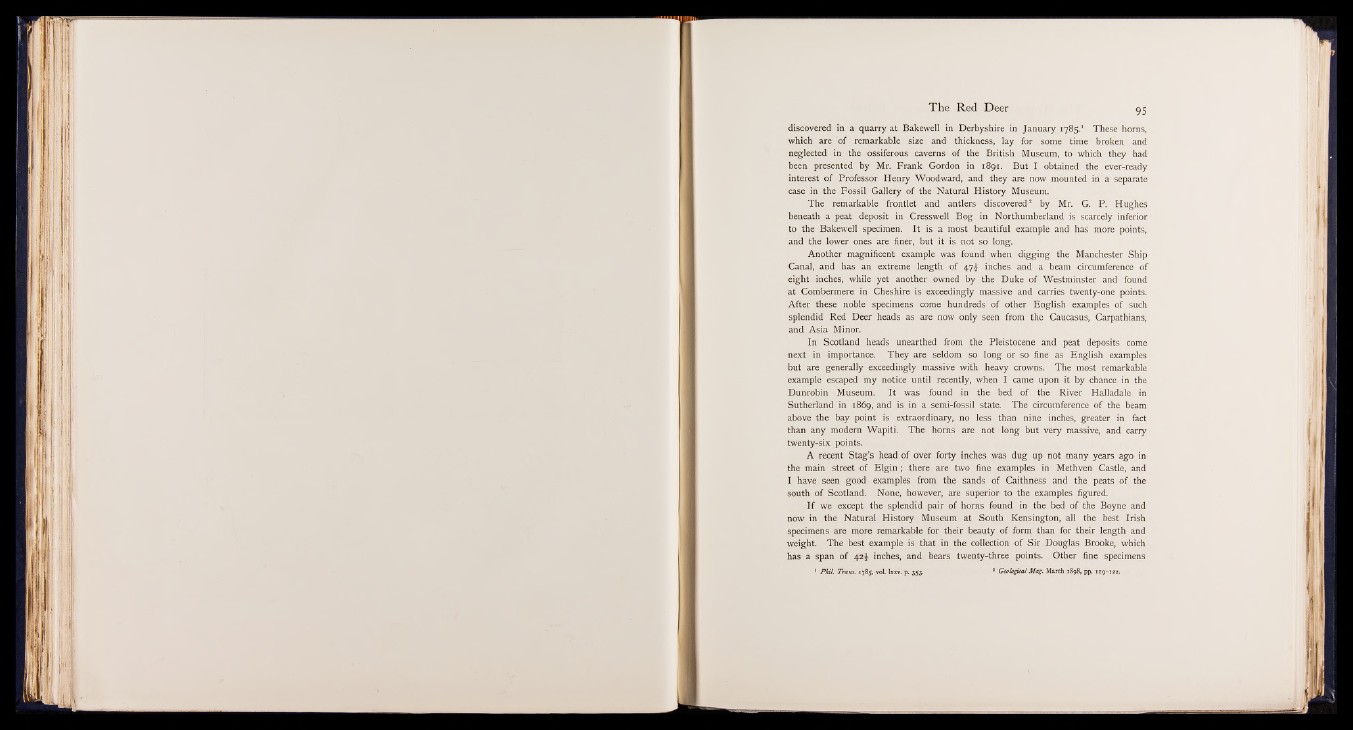
discovered in a quarry at Bakewell in Derbyshire in January 1785.1 These horns,
which are of remarkable size and thickness, lay for some time broken and
neglected in the ossiferous caverns of the British Museum, to which they had
been presented by Mr. Frank Gordon in 1891. But I obtained the ever-ready
interest of Professor Henry Woodward, and they are now mounted in a separate
case in the Fossil Gallery of the Natural History Museum.
The remarkable frontlet and antlers discovered2 by Mr. G. P. Hughes
beneath a peat deposit in Cresswell Bog in Northumberland is scarcely inferior
to the Bakewell specimen. It is a most beautiful example and has more points,
and the lower ones are finer, but it is not so long.
Another magnificent example was found when digging the Manchester Ship
Canal, and has an extreme length of 47£ inches and a beam circumference of
eight inches, while yet another owned by the Duke of Westminster and found
at Combermere in Cheshire is exceedingly massive and carries twenty-one points.
After these noble specimens come hundreds of other English examples of such
splendid Red Deer heads as are now only seen from the Caucasus, Carpathians,
and Asia Minor.
In Scotland heads unearthed from the Pleistocene and peat deposits come
next in importance. They are seldom so long or so fine as English examples
but are generally exceedingly massive with heavy crowns. The most remarkable
example escaped my notice until recently, when I came upon it by chance in the
Dunrobin Museum. It was found in the bed of the River Halladale in
Sutherland in 1869, and is in a semi-fossil state. The circumference of the beam
above the bay point is extraordinary, no less than nine inches, greater in fact
than any modern Wapiti. The horns are not long but very massive, and carry
twenty-six points.
A recent Stag’s head of over forty inches was dug up not many years ago in
the main street of Elgin ; there are two fine examples in Methven Castle, and
I have seen good examples from the sands of Caithness and the peats of the
south of Scotland. None, however, are superior to the examples figured.
I f we except the splendid pair of horns found in the bed of the Boyne and
now in the Natural History Museum at South Kensington, all the best Irish
specimens are more remarkable for their beauty of form than for their length and
weight. The best example is that in the collection of Sir Douglas Brooke, which
has a span of 42^ inches, and bears twenty-three points. Other fine specimens
* Geological P h il Trans. 1785, vol. lxxv. p. 353. Mag. March 1898, pp. 119-122.